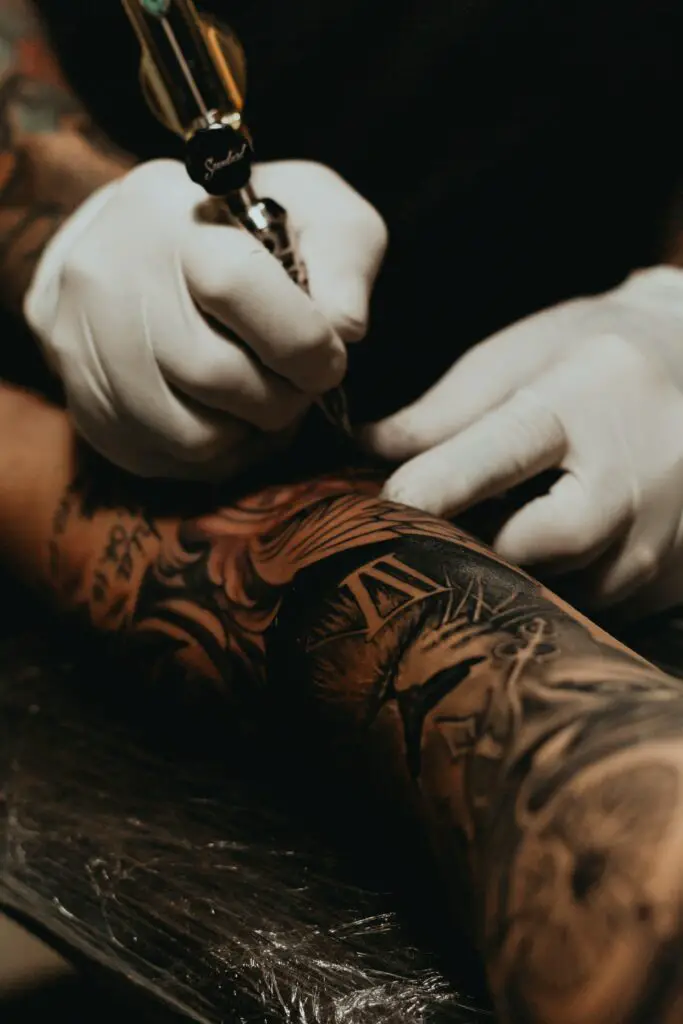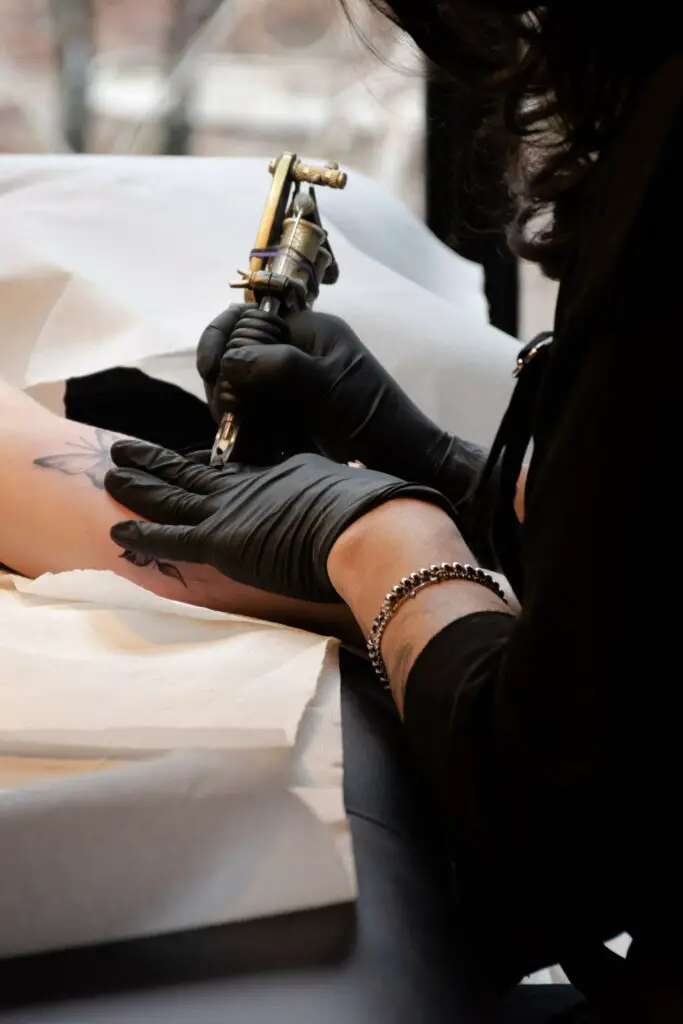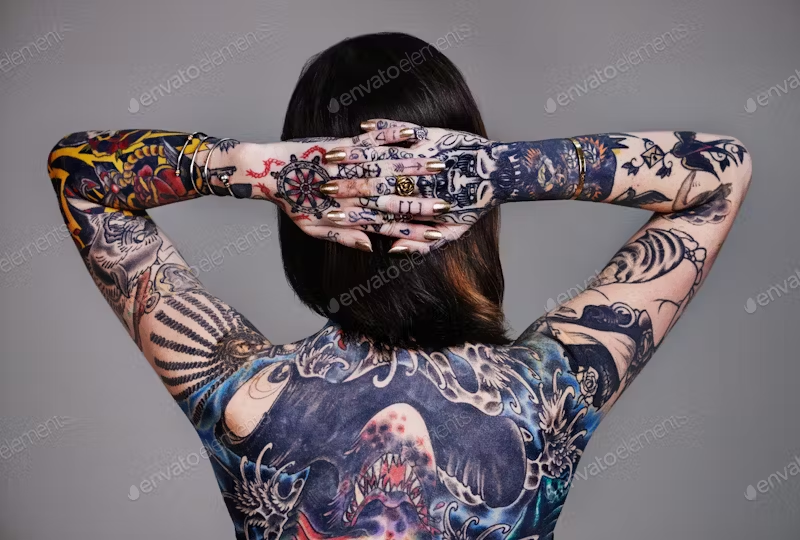Brown Ink Tattoo Pros And Cons. In recent years, the world of tattoos has seen a marked shift towards more subtle and unique ink choices. Leading this charge is the rising popularity of brown ink tattoos. Once an understated option, it has now emerged as a sought-after choice for many, captivating the hearts of tattoo enthusiasts and professionals alike. The allure lies not just in its soft, natural appearance but also in the distinct aesthetic it offers. As the fascination grows, it’s imperative to delve deeper and understand what sets this trend apart. The purpose of this article is twofold: to shine a light on the burgeoning trend of brown ink tattoos and, more importantly, to educate readers about its advantages and disadvantages. Whether you’re considering getting inked or are simply curious, join us as we explore the intricate world of brown ink tattoos.
Contents
Brief History of Brown Ink Tattoos
Tattoos, as a form of self-expression, have graced human skin for millennia. However, the specific choice and evolution of inks have witnessed their transformation over the ages. When discussing the origins and evolution of brown ink within tattoo culture, it’s a journey that intertwines with both practicality and artistic innovation.
Historically, tattoo inks were derived from natural sources. Indigenous cultures might have used plant-based dyes, minerals, or even charred remains of materials to craft their inks. Brown, being a prevalent color in nature — think of the earth, tree barks, and certain minerals — likely found its way into the tattooing practices of ancient civilizations. As tattooing methods modernized and expanded across cultures, black ink, due to its bold and lasting nature, became a dominant choice.
However, in the past few decades, there’s been a resurgence of interest in brown ink, owing much to its organic and subtle appeal. This harks back to an era where natural shades were predominant, providing a bridge between the past and the present.

Comparatively, how does brown ink differ from traditional black or colored tattoos? The most evident difference is in the visual impact. Black ink tattoos are known for their stark and pronounced appearance, offering a high contrast that makes designs pop, especially on lighter skin tones. Colored tattoos, meanwhile, play with a palette that can recreate almost any design in vibrant hues. Brown ink tattoos, on the other hand, offer a muted, earthy tone. They echo a softer, more vintage aesthetic, often resembling the look of aged photographs or sepia-toned prints. This unique characteristic makes them stand apart in a world where bold and bright often reign supreme.
Pros of Brown Ink Tattoos
Tattoos are personal and reflective of one’s character, story, or aesthetic preference. As brown ink tattoos gain traction, several advantages associated with them come to the fore. Let’s delve into these pros in greater detail.
a. Natural Appearance:
The allure of brown ink tattoos often begins with their subtle and earthy tones. Unlike the stark contrast that black ink offers, brown ink tends to blend more harmoniously with the skin, offering a more delicate delineation of designs. This subtlety can be particularly appealing to those looking for a tattoo that doesn’t scream for attention but rather whispers its presence.
Further emphasizing its appeal, brown ink is suitable for a variety of skin tones. While it’s especially complementary to lighter skin tones due to its muted contrast, it can also offer a soft and organic look on medium and even some darker skin shades.
b. Aging Gracefully:
An often underappreciated aspect of tattoos is how they age. When considering brown ink tattoos, it’s worth noting how gracefully they stand the test of time. Unlike some inks that may fade to an undesired hue, brown ink generally retains its warm tint over the years, maintaining its original charm. Moreover, while all tattoos fade to some extent due to factors like sun exposure and skin regeneration, how brown ink fades often results in a softer, more vintage appearance, rather than a washed-out look.
c. Artistic Value:
Brown ink tattoos aren’t just about subtlety; they carry significant artistic value. The unique shade offers aesthetic and design possibilities that might be unachievable with standard black or colored inks. Artists and enthusiasts alike have lauded the vintage or antique sentiment they can bring to designs, making them perfect for those aiming for a timeless, classic feel in their tattoos.
d. Versatility:
A noteworthy pro of brown ink tattoos lies in their versatility. Brown ink can complement other tattoo colors, enhancing depth and shadow without the stark contrast of black. It can also shine as a standalone piece, beautifully carrying intricate designs or simple symbols with equal poise. Moreover, the adaptability of brown ink in various tattoo styles – be it fine line, realism, tribal, or traditional – makes it a versatile choice for both artists and tattoo enthusiasts.
Cons of Brown Ink Tattoos So, Brown Ink Tattoo Pros And Cons
While brown ink tattoos offer a unique and captivating charm, it’s essential to consider their potential downsides. Understanding these drawbacks can help individuals make informed decisions about their body art. Let’s delve into the cons associated with brown ink tattoos.

a. Limited Contrast:
One of the most evident challenges with brown ink tattoos is the limited contrast they offer. This often translates to challenges in design clarity and visibility, especially with intricate designs that require a clear delineation between elements. The subtlety of brown can sometimes blur finer details.
Moreover, while brown ink may offer a unique look on lighter skin tones, its visibility against dark backgrounds or on darker skin tones can be compromised. On darker skin, the reduced contrast can lead to the design appearing more muted or even indistinct in certain lights.
b. Inconsistency in Color:
Brown ink tattoos come with a set of challenges in terms of color consistency. The spectrum of brown is vast, ranging from lighter tans to deep, almost black shades. This vastness can sometimes result in the potential for uneven color distribution across a tattoo, particularly if different sessions or ink batches are involved.
Furthermore, achieving the right shade or consistency can sometimes be challenging. Unlike black ink, which is generally consistent across brands and batches, brown can vary, making it crucial for both the artist and the client to be on the same page regarding the desired outcome.
c. Limitations in Design:
While brown ink offers a distinct aesthetic, it comes with its limitations in design. The muted nature of brown ink might not lend itself well to all designs, particularly those that thrive on bold contrasts and vibrant colors.
Compared to the dynamism of black or vibrant colored inks, brown may sometimes fall short in delivering the desired pop or impact, especially for designs that rely heavily on color differentiation or sharp contrasts.
d. Traditional Vs. Brown Ink:
In the vast realm of tattoos, tradition holds a significant place. Brown ink tattoos represent a deviation from these established norms. While this deviation is what makes them unique, it’s also where they face challenges. The reception of brown ink tattoos in the broader tattoo community can be mixed. Purists might view them as a departure from the classic tattoo aesthetics, potentially leading to debates about authenticity and tradition.
Moreover, individuals considering brown ink tattoos should be aware of this deviation from traditional tattoo aesthetics. While some might appreciate the distinction, others might feel that the tattoo lacks the typical ‘tattoo feel’ that black or colored inks provide.
Conclusion
In the vast canvas of body art, brown ink tattoos emerge as both a nod to tradition and a gesture toward artistic evolution. As we’ve explored, the allure of these tattoos lies in their natural appearance, their ability to age gracefully, the unique artistic value they bring, and their sheer versatility. On the flip side, potential challenges, including limited contrast, color inconsistencies, design restrictions, and deviations from traditional tattoo aesthetics, remind us that no art form is without its considerations.
In essence, tattoos are deeply personal, and what resonates with one might not appeal to another. Hence, the importance of making informed decisions cannot be overstated. So, whether you’re captivated by the sepia-toned charm of brown ink or still weighing your options, one thing remains constant: the invaluable insights of professionals in the field.
Therefore, as you ponder the prospect of immortalizing a piece of art on your skin, we strongly encourage you to consult with seasoned tattoo artists. Their expertise, coupled with your vision, can guide you in crafting a masterpiece that resonates with your essence and stands the test of time.





